Contents
- Introduction
- Understanding Invasive Weeds
- Common Invasive Weeds in the UK
- Identifying Invasive Weeds in Your Garden
- Effective Control Measures
- Preventing Future Invasions
- Conclusion
- Resources
Introduction
Every gardener dreams of a flourishing oasis, brimming with vibrant flowers and healthy plants. However, lurking in the shadows of our beloved gardens are persistent intruders: invasive weeds. These unwanted guests can stifle growth, deplete resources, and ultimately jeopardise the beauty of your green sanctuary. But fear not! This guide will equip you with the knowledge to identify these troublesome weeds, ensuring your garden remains a thriving ecosystem for the plants you love.
Understanding Invasive Weeds
Invasive weeds are non-native species that establish themselves in a new environment, often outcompeting local flora for resources such as sunlight, water, and nutrients. They can spread rapidly, disrupting the delicate balance of your garden’s ecosystem. Identifying these weeds early is crucial for effective management and preservation of your plants.
Common Invasive Weeds in the UK
Some invasive weeds are notorious for their fast growth and ability to dominate gardens across the UK. Here are a few you should be on the lookout for:
- Japanese Knotweed (Fallopia japonica): This notorious perennial can grow up to 3 metres in height, with hollow stems and large, heart-shaped leaves. Its robust rhizome system makes it particularly difficult to eradicate.
- Giant Hogweed (Heracleum mantegazzianum): With its towering presence and large white flower clusters, Giant Hogweed is not only invasive but also hazardous. Its sap can cause severe skin burns.
- Himalayan Balsam (Impatiens glandulifera): This annual plant thrives in damp areas, producing beautiful pink flowers. However, its explosive seed pods can scatter seeds far and wide, making it a prolific spreader.
- Common Ragwort (Senecio jacobaea): Recognisable by its bright yellow flowers, Ragwort can be harmful to livestock and outcompetes native plants, making it a significant concern for biodiversity.
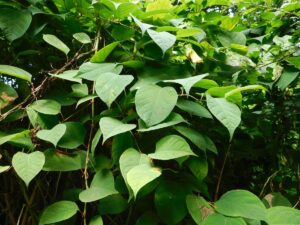
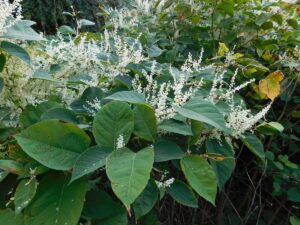

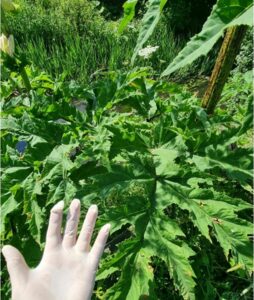
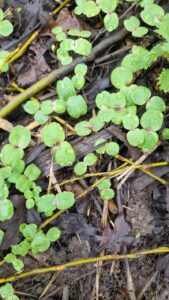
Identifying Invasive Weeds in Your Garden
Invasive weeds can be tricky to spot, especially when they blend in with the rest of your garden. However, identifying them early is crucial to protecting your native plants and maintaining a healthy garden. Whether you’re dealing with common invaders like Japanese knotweed or lesser-known species, this guide will help you recognise the telltale signs of invasive plants. Armed with the right tools and knowledge, you’ll be able to spot these unwanted guests before they wreak havoc on your garden.
Familiarise Yourself with Common Weeds: Become a Local Plant Expert
Understanding which invasive weeds are common in your area is the first step in managing them. By familiarising yourself with the most problematic species in Bristol and the UK, you’ll be better equipped to identify potential threats early. From studying plant features to leveraging technology, becoming a local plant expert will empower you to protect your garden from invasive species.
Plant Identification Apps
Utilise technology to your advantage. Apps like iNaturalist, PlantNet, or PictureThis can help identify plants in real-time.
It is not advisable to try to remove Japanese Knotweed yourself
Many types of knotweed can easily be mistaken by the untrained eye and has the potential to spread when it’s dug up
Local Gardening Books
Visit your local library or bookstore for guides specific to your region. These often include detailed descriptions and images of common invasive weeds.
Online Databases
Websites like the Global Invasive Species Database (GISD) or your local conservation agency can provide invaluable information.
Join Local Gardening Groups
Connect with experienced gardeners in your area. They can share insights and help you identify local invaders.
Examine Leaf Shapes and Growth Patterns: Unlock the Secrets of Foliage
One of the most reliable ways to identify invasive weeds is by studying their leaves and growth patterns. Every plant has unique foliage that can serve as a clue to its identity, and invasive weeds are no exception. By closely examining leaf shapes, sizes, and arrangements, as well as how the plant grows, you’ll start to recognize the subtle differences between native plants and invasive species.
Leaf Shape
Invasive weeds often have distinctive leaf shapes. Note whether the leaves are simple or compound, lobed or toothed, and their overall shape (e.g., lanceolate, ovate, cordate).
Leaf Size
Compare the leaf size to that of your native plants. Invasive weeds may have significantly larger or smaller leaves.
Leaf Arrangement
Observe how leaves are arranged on the stem. They could be alternate, opposite, whorled, or rosette-forming.
Growth Pattern
Some invasive weeds grow in dense mats, while others have a vine-like or shrubby habit.
Check for Flowering and Seed Production: The Power of Reproduction
Flowering and seed production are two critical ways invasive weeds reproduce and spread. Knowing what to look for in terms of flower colour, size, and seed formation can help you spot these invaders before they disperse further. The ability to recognize these traits can be a powerful tool in preventing the spread of invasive species in your garden.
Flower Colour
Invasive weeds can have uniquely coloured flowers, helping you spot them easily.
Flower Size and Shape
Note the number of petals, and whether the flowers are tubular, bell-shaped, or daisy-like.
Seed Heads
Some invasive weeds, like dandelions or thistles, have distinctive seed heads.
Seed Dispersal
Observe how the plant reproduces. Some invasive weeds spread rapidly through wind-borne seeds, runners, or rhizomes.
Look for Rapid Growth: The Garden Bullies
One of the most defining characteristics of invasive weeds is their ability to grow at an accelerated rate. These “garden bullies” quickly outcompete native species, stealing nutrients, water, and light. Monitoring your garden for sudden bursts of growth can be one of the easiest ways to catch an invasive weed in its early stages.
Growth Rate
Invasive weeds often outpace native plants. Monitor your garden for plants that seem to appear or spread overnight.
Competition
Notice if certain plants are choking out or overshadowing your native species, stealing their sunlight, water, and nutrients.
Monitor for Aggressive Roots: The Hidden Invaders
What you see above ground is only half the battle when it comes to invasive weeds. Many of these plants spread via aggressive root systems, which can outcompete or even strangle native plants underground. Monitoring your garden for signs of invasive root structures can help you tackle the problem at its source.
Root Depth and Spread
Some invasive weeds have deep taproots that can be difficult to remove, while others have extensive, shallow root systems that smother other plants.
Root Type
Look for plants with rhizomes, stolons, or tubers, as these can be signs of aggressive spreaders.
Root Competition
If your native plants are wilting or stunted despite proper care, invasive weeds might be stealing their resources underground.
Keep Records: Become a Garden Detective
Successfully managing invasive weeds involves vigilance and organisation. By keeping records of the plants in your garden, including photographs, journals, and reports to conservation authorities, you can track potential invaders and take action early. Becoming a “garden detective” will allow you to stay one step ahead of invasive species and maintain the health of your garden
Photograph
Document suspicious plants with photos, capturing leaves, flowers, and growth habit.
Journal
Keep notes on when and where you spot potential invasive weeds, and their growth patterns over time.
Report
If you find an invasive weed, report it to your local conservation authority. Early detection can prevent widespread infestation.
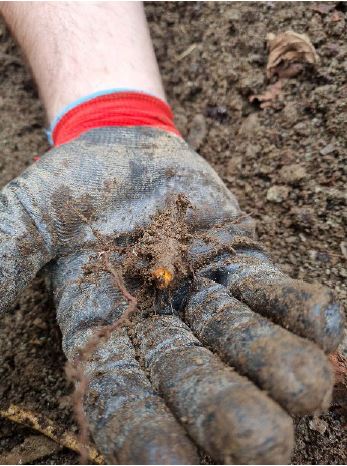
Effective Control Measures
Once you’ve identified invasive weeds, swift action is crucial to protect your garden. Implementing effective control measures can help eradicate and manage these unwanted plants. Manual removal can be practical for small infestations; hand-pull the weeds, ensuring you extract the entire root system to prevent regrowth. Applying a thick layer of organic mulch is another beneficial strategy, as it suppresses weed growth while conserving moisture for your plants. In cases of severe infestation, you may need to resort to chemical treatments. If you choose this route, always follow the manufacturer’s instructions diligently and be mindful of the potential impact on surrounding flora. Consistent vigilance is key to effective management; regularly monitor your garden for any signs of re-emergence, allowing you to tackle any invasive weeds promptly.
Preventing Future Invasions
After controlling invasive weeds, focusing on prevention is essential to maintain a healthy garden. One of the best strategies is to choose native plants, which are well-adapted to your local environment and less susceptible to being overtaken by invasive species. Maintaining healthy soil is equally important, as it promotes robust plant growth that can outcompete invasive weeds. Practising crop rotation is another effective technique; changing the location of your plants each season disrupts the life cycle of persistent weeds, making it harder for them to establish. Lastly, be cautious with your garden waste. Never compost invasive weeds, as they can propagate in your compost pile and re-enter your garden, undoing your hard work and potentially restarting the invasion cycle. By incorporating these preventive measures, you can create a resilient garden that resists invasive weeds.
Conclusion
Understanding how to identify and manage invasive weeds is crucial for any gardener aiming to maintain a thriving and beautiful garden. By equipping yourself with knowledge and employing effective control measures, you can protect your garden from these unwelcome invaders. Remember, vigilance and early action are your best strategies in the ongoing battle against invasive weeds.
Resources
- The Royal Horticultural Society: Invasive Weeds
- PlantLife: Invasive Non-Native Species
- Wildlife Trusts: A Guide to Invasive Species
The Postcode Areas We Serve
Gloucester and Swindon
Birmingham and the Midlands
Bristol and the South West
Cardiff and South Wales










